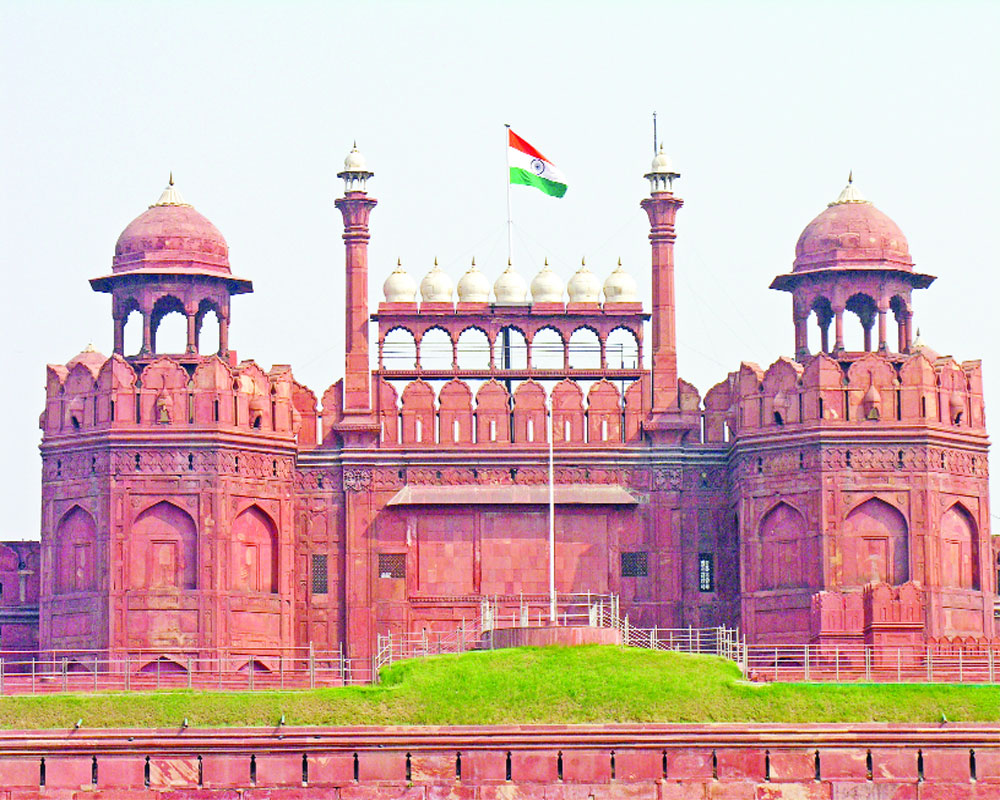Amitabh Kant’s book gives a sense of the challenges our nation faces, and details how it has been dealing with them and moving towards development. An excerpt:
Good land records and security of property rights are fundamental to well-functioning land markets required for sustained, robust economic activity in agriculture, manufacturing or services. India made a much-acclaimed climb up from the 130th place to the 100th place in the World Bank’s Ease of Doing Business Index for 2018. Unfortunately, on the sub-index on ease of registering property, India slipped 16 ranks from 138th to 154th, indicating the huge potential for improving India’s investment climate by removing distortions in land markets and records.
India is among the world’s most land-scarce countries relative to population. By 2050, land per capita in India will have declined fourfold relative to 1960; by 2050, China will have four times more land per capita and Brazil some twenty times more. Land market distortions in India have been estimated to reduce annual GDP growth by some 1.3 per cent a year.
There is clearly much to be done to attain India’s stated aspiration of moving to conclusive land titling from its current situation of presumptive titles. Land ownership in India is established largely through a sale deed recording the transfer of property, but there is no Government guaranteed title, and the onus is on the buyer to check past ownership. Land ownership is therefore presumptive, titles. Land ownership in India is established largely through a sale deed recording the transfer of property, but there is no Government guaranteed title, and the onus is on the buyer to check past ownership. Land ownership is therefore presumptive, and subject to challenge. Land-related disputes account for about 60 to 70 per cent of all civil litigation in India, and as much as 90 per cent of all land parcels are subject to legal dispute. Disputed land limits access to credit, since land is a collateral in a large proportion of loans in India.
This paper shares the results of recent research on the ground-level performance of the Government of India’s flagship program on improving land records. Since 1987, the Government has run a number of centrally sponsored schemes to improve land records. A network of three Indian research institutions came together in 2016 to produce a pilot assessment for three States of the Government’s ‘Digital India Land Records Modernisation Programme’ (DILRMP). Their research findings point the way to two things: First, the key considerations that the Government should keep in mind in designing any national assessment of the DILRMP, and, second, the core reforms that the Government should consider as it thinks about substantially improving the impact of the DILRMP.
The paper also has a second, process objective, which is to highlight the importance of piloting in public policy and State action. Too often in India, policymaking, implementation and assessments all go straight from the drawing board to national implementation for the world’s soon-to-be largest population. The vital lessons that could be learnt from experimentation and piloting are often lost in the administrative or political hurry to roll out programs, resulting in both ineffective schemes that don’t deliver when subjected to the test and, if politically important, schemes that undergo drastic changes in the very first few months of their being rolled out. Neither outcome bodes well for the effectiveness or stability of Government action.
In this instance, the agency that manages the DILRMP, the Department of Land resources (DoLR) in the Government of India’s Ministry of Rural Development, felt the strong need in 2015 for a national evaluation in order to understand the nature of the DILRMP reforms needed. DoLR, unlike many other sister agencies, decided to do a pilot assessment first before considering national effort. They felt that a pilot would greatly inform any nationwide evaluation and avoid the mistakes of a massive but uninformed national effort and of the policy prescriptions that might ensue from a poor quality evaluation.
Furthermore, DoLR also decided to have three nationally known, credible, independent research organisations working closely with each other to do the pilot assessment rather than do it departmentally with hired consultants. DoLR felt that the internal and external expert peer review processes among the three research institutions would further enhance the credibility of the findings and, as a side benefit, create new analytical capacity on land records issues in the country. Funding for the pilot was provided by the Omidyar Network. An external Technical Advisory Committee of experts was constituted for the continuous review and guidance of the research and met three times during the course of the impact assessment. Finally, stakeholder focus group discussions were held in each state and the findings discussed with the State authorities. The reports were released and discussed with policymakers and practitioners on 13 November 2017 in New Delhi.
The significance of good, verifiable land records has been self-evident in India for a long time. Under the Constitution, land falls within the jurisdiction of states. The Central Government released a draft ‘Land Titling Bill’ in 2011 as a model law for the consideration of States, but further action has been scarce. Starting in the late 1980s, the Central Government began incentivising States to modernise and computerise their land records, principally through two centrally sponsored schemes—Strengthening of Revenue Administration and Updating of Land Records in 1987–88 and the Computerisation of Land Records in 1988–89. The States unfortunately fared poorly in utilising the funds released by the centre, with little progress towards the ambitious goal of conclusive titling, and little design recognition of how tough a challenge such a goal posed. DoLR then merged the two schemes, resulting in the National Land Records Modernisation Programme (NLRMP, Figure 1) in 2008. NLRMP continued to be a centrally sponsored scheme and was renamed in 2014 after the change of Government as the DILRMP, now under the nominal umbrella of the new ‘Digital India’ initiative.
The main objective of the DILRMP (and the NLRMP before that) is to develop a modern, comprehensive and transparent land records management system in the country with the aim to implement conclusive land titling with title guarantee, based on four principles, (i) a unique identity for every property that will enable a common base for all land transactions, including the maintenance and updating of textual records, maps, survey and settlement operations and registration of immovable property; (ii) the ‘mirror’ principle, with cadastral records mirroring ground reality; (iii) the ‘curtain’ principle which makes the title the final proof of ownership, with mutation automatic following registration, and a curtain brought down on all past ownerships; and (iv) title insurance to guarantee title and indemnify the holder against losses from any title defects.
The Path Ahead: Transformative Ideas for India; Rupa Publications India; Rs 595. Excerpted with permission from the publisher


























